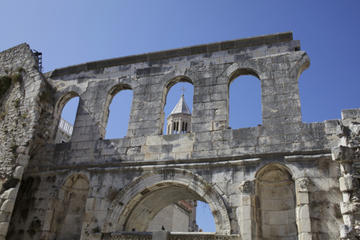Gates of Diocletians Palace
TIME : 2016/2/22 10:34:19

Gates of Diocletian's Palace
There are four different gates or access points to enter Split's historic core, all named after four different metals.
The best starting point is the Bronze Gate, which opens outward from the palace's southern area to Split's Riva (harbor-front promenade). Inside, it leads to the podrum, or basement, where support staff cooked meals for Diocletian and his guests. The cryptoporticus (gallery) that runs east-west from the Bronze Gate was an open promenade. The part of the podrum that extends from the Bronze Gate toward the steps to the Peristil above is a brick-lined marketplace filled with merchants and craftspeople selling souvenirs. The podrum connects to the Peristil, Split’s main square.
The Silver Gate can be accessed from the eastern wall, where you’ll pass through the jumble of stalls of Pazar, the city's produce market. Be careful accessing this point at night, as it can be crowded. The Silver Gate leads directly to Decumanus, the original east-west street that intersects with Cardo, the original north-south artery, at the Peristil. These former thoroughfares sectioned the palace into quadrants, which in turn became districts.
The glitziest gate is the Golden Gate situated at the north end of the wall, which was the portal to Salona. It has a guardhouse that contains the 9th-century Church of St Martin. Look up to find Ivan Mestrovic's statue of Bishop Grgur (Gregorius of Nin) Ninski, a 9th-century bishop who defended church use of the Glagolitic script and Slav language. Touch the bronze toe of the black sculpture for good luck.
The Iron Gate is located west. The guardhouse is the site of the oldest Romanesque belfry in Croatia and the 10th-century Church of Our Lady of Belfry.
